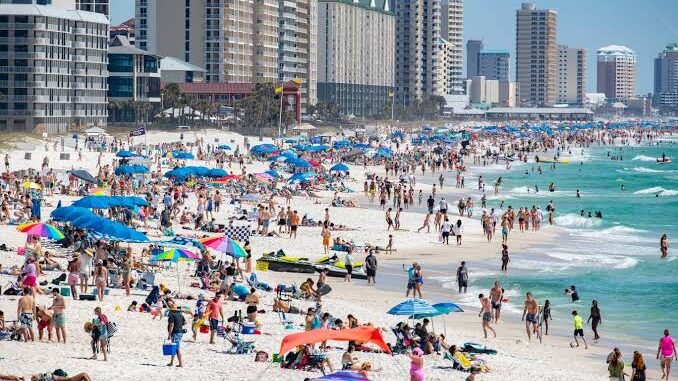
There have been new reports of “flesh-eating” germs in Okaloosa, Walton, and Bay counties. As of July 30, Bay County had two confirmed occurrences of the “flesh-eating” bacteria Vibrio vulnificus in 2025. The bacterial infection caused mortality in one case. Okaloosa County and Walton County each had one incidence that was reported. Four of the 13 incidents that occurred in Florida resulted in fatalities. A record 82 cases and 19 fatalities occurred last year, and health officials attributed the spike to Hurricane Helene-related floods.
An ideal habitat for bacterial growth is produced when storm surge forces saltwater inland and mixes it with fresh water. Numerous people in the Tampa Bay area were exposed to the bacterium when Hurricane Helene caused storm surges of up to seven feet into some regions, setting records. Warm, brackish seawater is ideal for the growth of the naturally occurring bacteria Vibrio vulnificus. According to the Centers for sickness Control, although infections are uncommon, the sickness spreads quickly and can be fatal in a matter of days.
When infections do happen, they usually result from eating raw seafood that has the virus or by getting into the water while injured. Infection can also occur from exposing a wound to raw seafood, like when shucking an oyster. Vibrio vulnificus infections are most common from May to October. The CDC claims that the term “flesh-eating,” which is used in many media, is misleading because the bacteria does not truly consume flesh. In rare cases, the bacteria can result in necrotizing fasciitis, a serious infection in which the surrounding tissue dies and seems to be “flesh-eating.”
Studies that have been published in the National Library of Medicine suggest that sediment resuspension—basically, the disturbance of the undersea dirt—contributes to the growth of vibrio bacteria. According to an NLM study, vibrio vulnificus populations can rise significantly when even tiny volumes of sewage enter estuarine waterways. Higher quantities of the bacteria are also detected when pet excrement and leaking septic tanks come into touch with the water, according to the Mobile BayKeeper, an organization that works to maintain the quality of the water in coastal Alabama.
According to a recent News Herald article, sanitary sewage overflows are a result of aged wastewater systems in Bay County and surrounding Florida cities. These usually happen when the system is overloaded with water due to intense rainstorms. According to researchers cited by the science news magazine EOS, heavy rains can also create an atmosphere that is conducive to the growth of the bacteria. Additionally, the researchers point to rising water surface temperatures brought on by climate change as a factor in the growth of vibrio vulnificus populations.
The water is quite warm right now. At its monitoring station on Panama City Marina, the National Oceanic and Atmospheric Administration recorded water temperatures of 89, while on Panama City Beach, they recorded temperatures of about 85. The water temperature at their Pensacola station was 89 degrees as well. According to the Florida Department of Health, vibrio vulnificus may develop in water as hot as 105 degrees, but it prefers temperatures between 68 and 95.

Be the first to comment